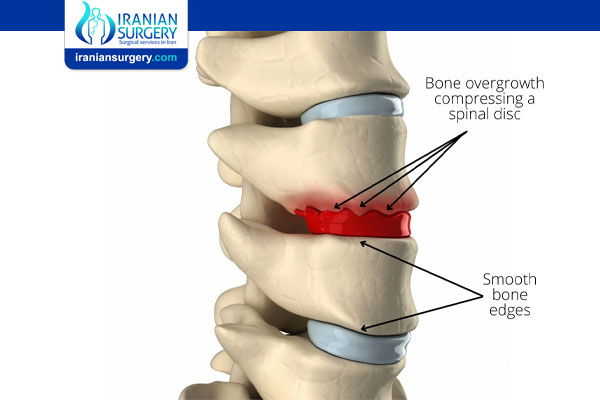Bone Spurs (Osteophytes)
What is a Bone Spur?
A bone spur, also called an osteophyte, is a smooth, bony lump that grows off a bone. Bone spurs develop over long periods of time, usually near joints (where two or more bones meet).
Before Bone Spurs Treatment
Who gets bone spurs?
Bone spurs are most common in people 60 years or older, but younger people can get them, too. People with osteoarthritis (OA) are much more likely to get bone spurs. OA is a common form of “wear and tear” arthritis that happens when cartilage, which cushions your bones, wears down.
Where can bone spurs grow?
Although they can grow from any bone, osteophytes are particularly common in the:
. Foot, especially the heel (heel spurs or calcaneal spurs), big toe and ankle.
. Hand or finger.
. Hip.
. Knee.
. Neck.
. Shoulder.
. Spine.
Symptoms and Causes
What causes bone spurs?
Joint damage from OA is the biggest cause of bone spurs. OA is a breakdown of cartilage — the firm, flexible tissue that cushions bones and allows joints to move more easily. OA develops as we age or after damage (like a sports injury).
As the body tries to repair cartilage, it creates new bone material. These new bony growths are osteophytes.
Ankylosing spondylitis also may cause bone spurs. This rare arthritis causes spinal inflammation. Over time, ankylosing spondylitis fuses, or connects, the small bones in the spine (vertebrae). The body responds by forming spinal osteophytes.
What are symptoms of bone spurs?
Some people have bone spurs and don’t even know it. Spurs start to create symptoms when they:
. Put pressure on nearby nerves.
. Restrict movement.
. Rub against other bones or tissues.
When that happens, you may feel some:
. Knobby or bumpy areas, especially in the fingers or toes.
. Numbness and weakness, especially in the legs if the spine has spurs.
. Pain near the affected joint, like heel pain.
. Reduced range of motion (how far the joint moves).
. Stiffness.
. Tendinitis (swelling of a nearby tendon).
. Tendon tears (like a rotator cuff tear in the shoulder).
Diagnosis and Tests
How are bone spurs diagnosed?
Without symptoms, you may accidentally discover a bone spur during an X-ray or other test for a different condition.
If you report pain, stiffness and loss of motion to your healthcare provider, he or she will:
. Ask you to describe your symptoms.
. Ask about your medical history and family’s medical history.
. Ask you to rate your discomfort.
. Perform a physical examination.
. Test your joint’s range of motion and strength.
. Order imaging tests, like X-rays to look for arthritis and spurs or CT scans or MRIs to identify damaged ligaments or tendons.
Prevention
How can I reduce my risk of bone spurs?
There is no certain way to prevent bone spurs. But you can reduce your chance of developing them by following a healthy lifestyle:
. Be physically fit.
. Eat a balanced, nutritious diet.
. Maintain a healthy weight to reduce extra stress on bones and joints.
. Maintain good posture and ergonomics (proper positioning at your desk).
. Prevent joint injuries by stretching and using safe exercise techniques. Don’t overdo it.
. Wear well-fitting, supportive shoes.
During Bone Spurs Treatment
Management and Treatment
When should I talk to my healthcare provider?
If you have bone spurs without symptoms, you don’t need treatment. Tell your healthcare provider if you develop joint pain, stiffness, limited motion or numbness.
How are bone spurs treated?
Some home remedies and lifestyle changes help ease osteophyte symptoms:
. Ice to reduce swelling.
. Over-the-counter pain relievers, such as acetaminophen or NSAIDS like ibuprofen.
. Rest.
. Supportive shoes or shoe inserts.
. Weight loss to decrease joint and bone stress.
If those methods aren’t enough, your healthcare provider can prescribe:
. Physical therapy: Exercises and stretches can reduce pain, improve range of motion and strengthen muscles around joints.
. Prescription pain medications: If over-the-counter pain medicines don’t provide relief, your healthcare provider may prescribe a stronger option or cortisone shot.
. Surgery: If symptoms continue after a year of treatment, surgery can remove the bone spurs.
After Bone Spurs Treatment
Outlook / Prognosis
How long do bone spurs last?
Bone spurs don’t go away unless you have surgery to remove them.
Do bone spurs grow back?
Although bone spurs don’t usually grow back after surgery, more may develop elsewhere in your body.
What can I do for pain and stiffness from bone spurs?
You can relieve pain and stiffness from bone spurs with rest, ice and over-the counter-medications. Properly fitting shoes and weight loss also reduce joint stress. If symptoms become severe or unmanageable, call your healthcare provider.
Should I avoid activity?
Even with bone spurs, try to stay active and healthy. Avoid activities and movements that hurt. Choose low-impact activities, like walking instead of running.
When you exercise, take steps to minimize joint damage: Make sure you have good footwear, concentrate on proper techniques, and always warm up and stretch.
Source:
. https://my.clevelandclinic.org/health/diseases/10395-bone-spurs-osteophytes

